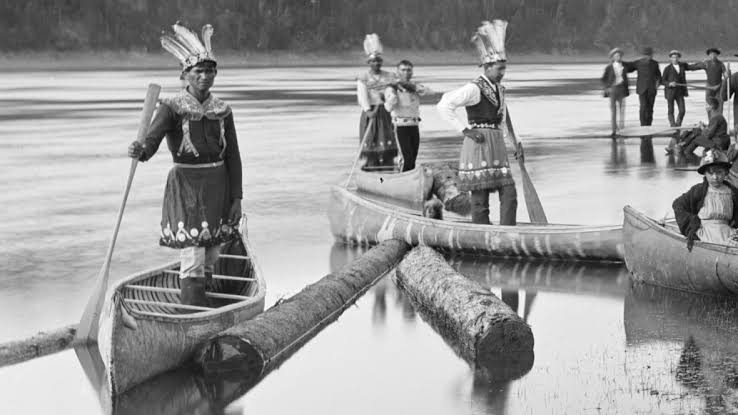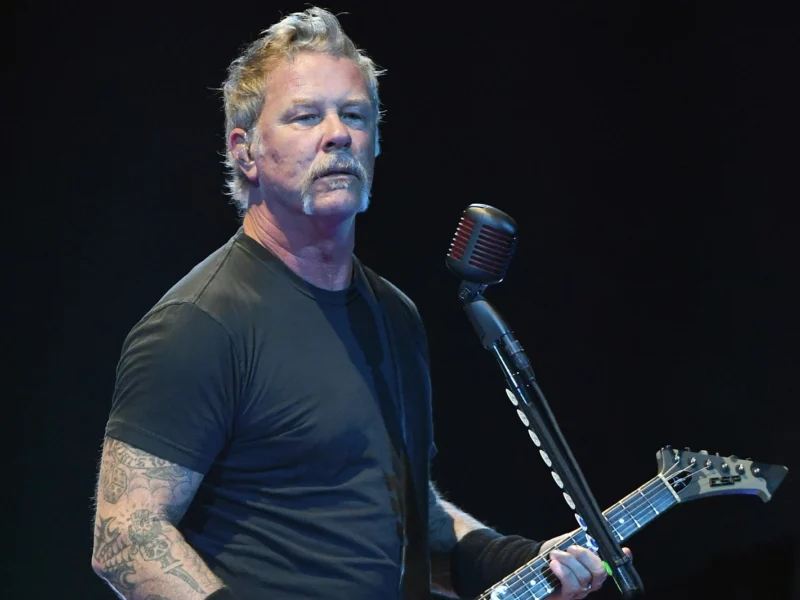My great-great-grandfather was brought into Taos, a city in what is now New Mexico, as a young Navajo boy around 1860. Slavery would soon be abolished, but at the time indigenous bondage was widespread. He was purchased — a typical price would have been 100 dollars — by Don Juan Santistevan, a Spanish man whose settler family had been in the region since at least the early 1700s. Santistevan had just lost his only son, and raised the Navajo boy as part of the family. My ancestor may have obtained his life and his freedom, but he never rejoined Navajo society. His language and even his name — he was called Santiago Santistevan — became Spanish, and all threads of Navajo culture were lost in my family. The destruction of Native cultures has taken many forms throughout our country’s history, from Manifest Destiny to mining operations, from blankets laced with smallpox to aggressive policing. According to the Center on Juvenile and Criminal Justice, Native Americans are the racial group most likely to be killed by law enforcement. But the displacement and assimilation of Native children is just as much a part of that history — and it didn’t end with my great-great grandfather. From the late 1800s through the mid-1900s, indigenous children across the country were placed in boarding schools meant to assimilate them into white culture, a practice that proliferated throughout the country. Abuse was common practice in these institutions. Richard Henry Pratt, who in 1879 founded one of the first such schools in Carlisle, Pennsylvania, phrased his goals quite bluntly: “Kill the Indian in him, and save the man.” Confronting Painful Truths Denise Altvater was born in 1959, a Passamoquoddy child in Maine. She and her sisters were taken from her home by child welfare services when she was seven years old and forced into foster care, where she recalls being raped, starved and forced to sleep among rats. She eventually ended up in a kinder foster home, but even there she was discouraged from speaking of her heritage. Altvater now works in the field of indigenous child welfare, but reentering the tribe has been a long and often excruciating process. She has been suicidal at times, and struggled with her own personal relationships. “I wasn’t the best parent,” she told me. “I didn’t know how to be a parent.” Genocide, as defined in the United Nations’ 1948 Convention on the Prevention and Punishment of the Crime of Genocide, includes “forcibly transferring children of the group to another group” when done “with intent to destroy, in whole or in part, a national, ethnical, racial or religious group.” This (and other definitions) undeniably applies to our nation’s history with indigenous peoples. Less acknowledged is that, according to a June report out of Maine, the cultural genocide continues today. That report, titled “Beyond the Mandate: Continuing the Conversation,” zeroes in on what might be evil at its most banal: the intricacies of child-welfare laws. “Beyond the Mandate” shows that Native children are disproportionally put into foster care or put up for adoption, often taken in by non-Native foster families unwilling or unable to preserve the child’s language and heritage.
Sadly, this problem is not unique to Maine. As Truthout recently reported, over half of South Dakota children in foster care are indigenous, despite indigenous children making up only 15 percent of the youth population. And nearly nine in ten of these were in non-Native foster homes. But while other states face similar issues, Maine’s “Beyond the Mandate” is the first report on indigenous child welfare in the United States to be created by a “truth and reconciliation commission” (TRC) — the Maine Wabanaki-State Child Welfare Truth and Reconciliation Commission. The TRC model arose in Latin America in the 1980s but was popularized in post-apartheid South Africa. While some criticize these commissions for being unable to enforce real accountability, proponents argue that an honest appraisal of injustice can be a radical first step towards change. The People of the Dawn There are four Wabanaki tribes living in Maine, primarily in the state’s northern half: the Passamaquoddy, who have two reservations, the Maliseet and Penobscot, who have one each, and the Micmac, who have no formal reservation in Maine but own land and a cultural center in Aroostook County. The TRC’s report comes at a time of high tensions between these tribes and the Maine government. The Passamaquoddy and the Penobscot announced on May 26 that they would be removing their delegates to the Maine state legislature. In a tradition dating back to the 1800s, these tribes had sent a non-voting representative to Augusta, Maine’s capital, to discuss and propose policy. “Our hope is that one day the state will … value the tribes as sovereign partners and engage in a relationship of mutual respect,” said Matthew Dana, the Passamaquoddy representative, as reported in the Portland Press Herald. “Until then, we simply must decide our own future.” (The non-voting Maliseet representative will remain, and the Micmac do not have a representative.) In April, Gov. Paul LePage had rescinded his own 2011 executive order requiring that Native peoples be directly consulted on state policy that affects them. This decision came amidst controversy over indigenous fishing rights and local water quality. To the four remaining Wabanaki tribes, these issues bode ill for the future.
The ancestors of the Wabanaki, meaning “People of the Dawn” or “People of the Dawnland,” have inhabited present-day Maine and adjacent territories of present-day Canada (a region they call Wabanahkik, or “Dawnland”) since the retreat of the glaciers some 12,000 years ago. Maine is heavily forested even today, and Wabanaki economy and spirituality are connected to the state’s woods and rivers. At one time there were over 20 Wabanaki tribes, and an estimated 32,000 individuals. From 1616 to 1619, more than three in four died. This near extinction was mostly due to European disease, though more direct conflict with European humans also played a role. For the next 400 years, Wabanaki relations with the British Crown and the U.S. government remained fraught with distrust and confrontation. Colonists placed bounties on Wabanaki scalps, kicked them off of their land and attempted — with varying success — to replace their traditional Earth-centered spirituality with Christianity. When the assimilatory boarding schools spread across the continent, Maine was no exception. In Canada, indigenous people filed multiple class-action lawsuits over the country’s Indian residential schools, which were similar in intent and effect to the U.S.’s boarding schools, and the last of which closed in the 1990s. In addition to some financial reparations, these lawsuits led to the creation of a TRC (which also released a report this June) to facilitate the healing process. Thousands gathered for a week of events in Ottawa coinciding with the report, which ended with 94 specific recommendations for rectifying this historic injustice, some symbolic (apologies from the government and the pope, and including “Treaties with Indigenous Peoples” in the Oath of Citizenship) and others more material (reforms to the criminal justice system and increases in educational funding). Not quite 300 gathered in Hebron, Maine, for the Wabanaki-State TRC’s closing ceremony, and the event lacked the national attention of its Canadian counterpart. But unlike many TRCs this one did not seek only to remediate and recover from the crimes of the past, but also to confront an ongoing tragedy — residential schools may have closed, but the Maine foster care system still discriminates. ‘Oh my God! … I’ve been an agent of genocide’ The Indian Child Welfare Act (ICWA), passed by Congress in 1978, granted tribal child welfare programs more authority in dealing with native kids. The goal was to limit the state’s ability to take native children out of their homes, and thus “promote the stability and security of Indian tribes and families.” In Maine, such legislation was badly needed. In Aroostook County, home to a band of the Micmac People, 30 percent of Native children were in state foster care in 1972. Statewide, indigenous children were put in foster care at rates 25 times higher than other children that year. The TRC was unable to obtain precise data on the given justifications for taking these children away, but the commission points the finger at “institutional racism,” “historical trauma” and “contested sovereignties and jurisdictions between the state and the tribes.” While the report does not delve into this, indigenous people across the country face high rates of poverty, unemployment, incarceration and substance abuse. ICWA helped, but it was no cure-all, and for years Maine regularly brushed the legislation aside. In 1999, a joint state-tribal venture sought to address the inadequacy of the state’s ICWA compliance. This workgroup prepared and delivered a training session for child services workers, explaining both what ICWA meant and why it was necessary. As part of this training, they recorded and showed a video of Altvater sharing her own horrific experience within the child welfare system. The ICWA Workgroup would eventually become Maine-Wabanaki REACH, an organization intended to seek solutions and help both Native and non-Native communities understand the issue. The idea for a TRC first surfaced in 2008. The proposal grew out of a series of “painful discussions about privilege and racism,” says REACH co-director Esther Attean, who is half Wabanaki and a member of the Passamaquoddy tribe. Understanding the role past trauma and persisting prejudice still play in tribal-state interactions, the group felt a TRC might be able to bring much of this historical baggage to light. Attean, Altvater and other Wabanaki spent two years pursuing the idea, and in February 2011 presented a declaration of intent for a TRC to the state. The declaration received pushback — which Attean sees as a sign of “respect for the process,” a departure from the norm in which tribal people are “placated” out of “political correctness” — and in May they went back to work to rewrite the declaration, this time with the state playing an active role. In June 2012, Gov. LePage and five Wabanaki chiefs (between them representing all four remaining tribes) signed a Mandate for the Maine Wabanaki-State Child Welfare TRC. The fact that both sides — the state and the tribes — had mutually endorsed the commission is unique among TRCs. Once the five commissioners — two of whom are Native, though none of whom are Wabanaki — had been chosen, they spent 27 months researching and preparing their report. They used data from Maine’s Department of Health and Human Services (DHHS) and collected 159 statements — 95 from Native people and 64 from non-Natives.


